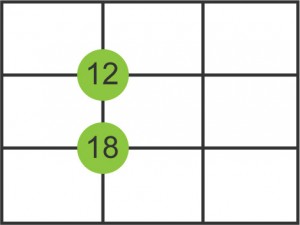by Annie | Aug 26, 2010 | Game Design
It’s official, folks. Term one is officially over. A lot of things have happened in these past 8 weeks, some joyous, some tragic, some never to be mentioned again. Here are a few things I’ve learned about along the way: 1. Boobs and explosions Making games is all about boobs and explosions. Not. These were both hot topics of game design conversations early on, sometimes jokingly, other times not. But as we soon learned, solid game mechanics top eye candy. Every time. 2. Persistence Rome wasn’t built in a day, and neither are great games. The best games take lots of planning, critical thinking, problem solving, and patience. 3. Teamwork You can’t go through an experience like this without solid support. Eight weeks ago, GD18 was just a group of 30 strangers who shared a love of video games. Several long days and all-nighters later, we’ve become fast friends. The list of inside jokes is growing, and nicknames are popping up. With the countless all-nighters ahead of us, these friendships will surely become increasingly important. 4. Passion Huge projects, little time, a whole lot of pressure. You know things are getting crazy when everyone has either a large coffee or a Red Bull on their desk. And sometimes both. Dollar pizza slices start to become the norm, and showers become a thing of the past. It’s rare to find something you’re truly passionate about, so when you do, give it all you’ve...
by Annie | Aug 22, 2010 | Game Design
With all the illicit acts available to players within the realm of Grand Theft Auto, one young man has found a way to use the game to perform good deeds. If you have a second, this article is definitely worth reading: My Four-Year-Old Son Plays Grand Theft...

by Annie | Aug 19, 2010 | Game Design, Illustration Station
Have you ever wanted to shoot balloon animals? Well, in my latest game idea, that’s exactly what you get to do! Balloon animals have gotten loose, and you must shoot as many as you can before time runs out so they don’t take over the city. Take a...
by Annie | Aug 16, 2010 | Game Design
Not only is it hard to design a game, it’s hard to describe how to play it once it’s done. No one likes to read a novel when sitting down to play a game, so the rules have to be short yet comprehensive. I spent a good chunk of the weekend refining my board game and writing out the rules. Now, I may be able to spit out a blog post in a matter of minutes, but this was an entirely different beast. Organization is key in writing effective game rules. You have to lead players through the rules, objective, and examples in a logical order so they don’t have to read and reread the rules over and over. Recently, one of my classmates and I tried out a pirates game in which you steer ships through a grid to get to the treasure and return it to your home dock. Sounds pretty simple, right? We skimmed through the rules, set up the board, and started playing. Soon, we ran into a barrage of questions. Can we move diagonally? How many spaces do you have to move in one direction? How do you capture another ship? In the twenty or so minutes that we attempted to play the game, at least 15 were spent flipping through the pages of the rule book. Lots of text, lots of pictures, not much clarity. Ending the game prematurely was an easy choice. With that non-example in mind, I set out to write my game rules, making sure that important information like objective and board set-up was front and center, followed by concise...

by Annie | Aug 13, 2010 | Game Design
Creating a game is hard work. Video games combine the flashiness of graphics with the strength of innovative game mechanics. For now, I’m just working on creating a board game. No scripting, no graphics. Just a board, some pieces, and a few rules. Game design is an iterative process, meaning that you create, assess, modify, and repeat. Over and over again. My board game idea started as two separate concepts, one involving the infinite factor connections between numbers, and the other involving building spider webs. After several hours of staring at the wall and gnawing on my pencil, I had a eureka moment: combine the two! Thus, I’ve arrived at my current iteration of Web, a game in which you control the movement of a king and two guards across a chess board in an attempt to get your king to the opposite side first. In order to move your pieces, you must create factor connections between numbers. Each factor connection opens a pathway for your pieces. For example, say you have the numbers 12 and 18 in your hand. You can form a connection between them because they share the factors of 2, 3, and 6. You could then move a piece across the line between the two numbers. If your opponent has the numbers 3 and 9 in their hand, they could add to your numbers through other factor connections. But be careful! You can only move across pathways fully or partially created by numbers of your color, so your opponent might be planning blocks along the way to thwart your progress. In addition, watch out for...
by Annie | Aug 12, 2010 | Game Design
Imagine that you live on a space station. Alone. Tonight, you have a date. The first in a long time. You plan on cleaning up the space station and getting yourself ready, but you discover that alien slugs have taken over. What do you do? Pelt them with salt, of course. This is exactly what my Google SketchUp white-box level is about. Take a...


